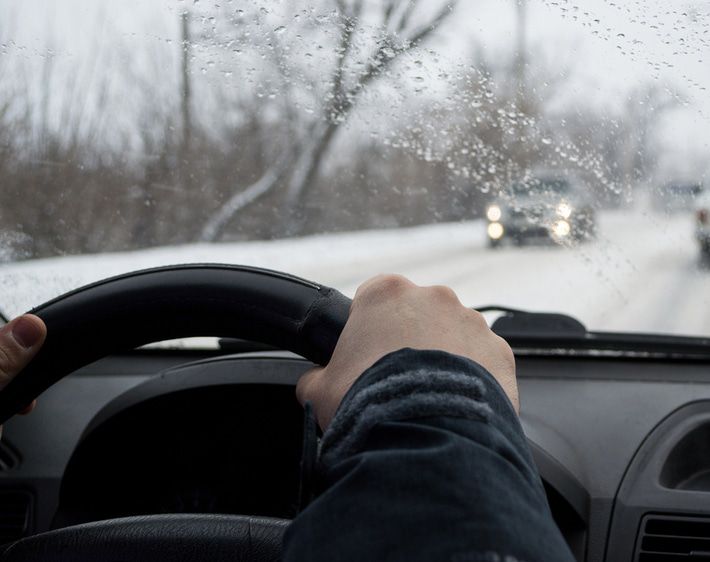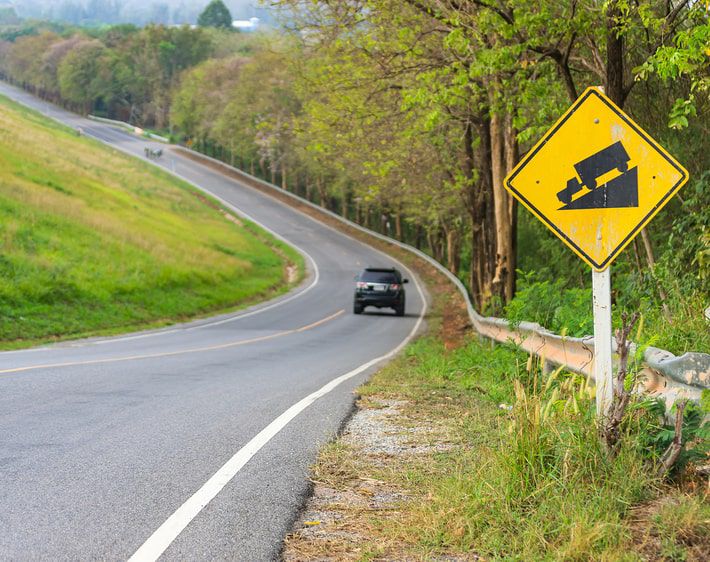Colder weather can introduce a lot of fun into your life—think skiing, sledding, and slurping hot cocoa! However, it can also add a fair amount of fright since lower temps can affect your car's performance.
For example, a combination of moisture, friction, and worn parts can lead to some noticeable brake problems in cold weather. Here are four common brake problems you should be aware of as you drive into winter!
Brake Problem #1: Rust
It might look like there’s snow everywhere, but don’t be fooled! That snow quickly becomes liquid when it comes into contact with a warm vehicle.
When you park your car after a long day of dashing through the snow, water remains on your brake components. After days (or months) of winter, rust begins to form. Road salt accelerates the rusting process.
Although some degree of surface rust is unavoidable, too much rust on your brake rotors can cause a problem known as pitting. Pitting wears away at your brake rotors, leaving them scored and rough, which allows rust particles to contaminate the brake pads. The first signs of a water-compromised braking system usually include weird sounds, reduced stopping power, and brake pads frozen to the rotor! If your rotor and brake pad get stuck together, you may notice a stiff brake pedal, a "sluggish" feeling when you take your foot off the brake pedal, and a burning smell.
Signs Your Brakes Are Rusty
When there’s excessive rust on your brake components, you may notice that your brakes, squeal, squeak, or lose power. If you suspect you’re dealing with this brake problem, visually inspect your brake pads for scoring or come in for a brake check to get an expert tech’s opinion.
Avoid leaving your car parked outside for extended periods of time to help prevent the growth and spread of rust in your braking system.
Brake Problem #2: Too Much Heat
It may sound weird, but heat can be a real problem for your brakes during cold winter weather. Snow and water on your brake pads force you to apply higher braking pressure than usual when operating your vehicle.
When you apply more pressure—and hold the brake pedal down for longer—your braking system can get really hot, really fast, and potentially overheat. Overheated brakes don't perform as well as your vehicle manufacturer intended.
Signs Your Brakes Are Feeling the Heat
Heat wears down brake components fast, which may result in reduced brake responsiveness and squeaky brake sounds in the winter. Additionally, even before the braking system suffers any wear, it may overheat and cause a temporary decrease in braking ability.
Avoid riding the brake pedal to help prevent brakes from overheating. You can also brake smoothly, use engine braking, and keep a safe distance from the car in front of you. (That way you won't have to slam on the brakes!) Bonus points for sticking to your manufacturer’s brake service recommendations.
Brake Problem #3: Weakened Lines
When it comes to battling cold temperatures, brake fluid is tough. How tough? It won’t freeze until it gets to about -40°F. So unless you’re driving around the North Pole looking for Santa Claus, you should be fine.
However, the quality and health of your brake fluid may compromise its freeze-proof properties. Plus, repeated exposure to the elements can wear out your brake lines over time, causing cracks and tears. Water can then seep into damaged brake lines, which is a big problem since water freezes at 32°F, a much higher temperature than the freezing point of brake fluid.
Signs of Brake Lines/Fluid Problems
Damaged brake lines plus watered-down brake fluid are a 1-2 punch to your stopping capacity. You may have this problem if you notice your brakes "drag," or take longer to "let up" and allow you to accelerate even after taking your foot off the pedal.
Don’t overlook brake inspections in your manufacturer-recommended maintenance schedule if you want to stop brake line problems in their tracks. If your car’s brake fluid is low due to damaged brake lines, schedule a brake service instead of continuing to refill your brake fluid.
Brake Problem #4: A Dirty Undercarriage
A harsh winter can lead to car problems even after spring arrives! Winter driving can result in a buildup of road salt. Despite making for safer roadways, road salt accelerates undercarriage rust and corrosion, damaging vehicle parts like the exhaust system, brake pads, and muffler.
Signs of Undercarriage Corrosion
The most obvious sign of premature corrosion is an excess of rust on the car's underbody, which you will have to inspect visually. However, keep in mind that corrosion isn't just unsightly. It can cause a variety of sticky situations, like a frozen emergency brake, muffler rattling, and decreased acceleration or braking power.
You can help ward off undercarriage corrosion by cleaning your car regularly during and after the winter months.
Brake Solution: Firestone Complete Auto Care
Are your brakes up to snow good? You shouldn't have to spend a pretty penny to stop on a dime. Visit Firestone Complete Auto Care, and let us help you halt cold weather brake problems in their tracks. We can diagnose your car problems with a Complete Vehicle Inspection, and recommend brake services, if necessary!



